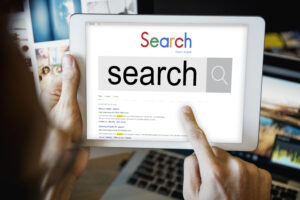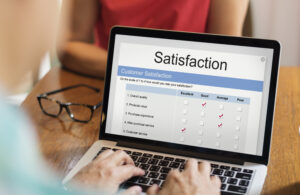Companies invest more than $10 billion every month in pay-per-click ads; however, more than 68% of advertisers find it difficult to explain how an auction system works. PPC isn’t just an abbreviation. It’s a precise marketing tool that produces real outcomes, but only when you know how to use its mechanisms. What Does PPC Stand For?
Imagine PPC (Pay-Per-Click) as a virtual slot machine. You pay when people pull the lever (clicks your advertisement), but getting rich requires planning rather than luck. This guide explains the basics of PPC and how it operates, and why it’s the most powerful factor in the field of digital marketing. It provides you with practical tips to increase your return on investment.
Defining PPC Stand For: The Core Concept
Pay-Per-Click (PPC stands for Pay-Per-Click) is a model where advertisers only pay when someone clicks on their ads, which is an ad-hoc model that is with a focus on the outcomes. Contrary to traditional advertising, in which it is a matter of paying for clicks, regardless of the amount of engagement, PPC ensures you’re only paying for the actual amount of interest.
- Key Distinction
PPC All Online Ads: It does not include cost-per-mille display advertisements that charge per 1000 impressions. - PPC Scope:
It includes advertisements for search (e.g., Google Ads), Shopping ads, as well as social media ads with a performance component (e.g., Meta, TikTok).
Read more about Content Marketing Services.
Anatomy of a PPC Campaign: The 5-Part Engine
1. Keywords
- Intent Layers:
- Navigational:
Specific searches, such as “Nike shoes” (brand-focused). - Commercial:
High-intent queries like “best running shoes 2025” (purchase-ready).
- Navigational:
- Match Types:
- Exact:
Specific terms are targeted (e.g., Buy running shoes). - Phrase:
Finds matches for queries that contain the word (e.g., “best running shoes for women”). - Broad:
Captures variations, but is at risk of causing unrelated clicking (use Negative keywords in order to eliminate phrases such as “free”).
- Exact:
- Pro Tip:
Limit the size of campaigns to 20-30 keywords with high intent to improve Quality Score and lower expenses.
2. Bid Strategies
| Type | Best For | Risk Level |
| Manual CPC | Control freaks needing precise budget management | ★★★☆☆ |
| tCPA (Target Cost Per Acquisition) | Lead generation (e.g., sign-ups, inquiries) | ★★☆☆☆ |
| tROAS (Target Return on Ad Spend) | E-commerce maximizing revenue | ★☆☆☆☆ |
| Maximize Clicks | Brand awareness or traffic campaigns | ★★★★☆ |
3. Ad Creative
Google’s 2025-year-old requirements for search ads that are responsive:
- 3 Headlines:
30 characters each, emphasizing unique selling points. - 2 Descriptions:
90 characters per line, each of which highlights benefits or special offers. - AI-Generated Assets:
The requirement for Performance Max campaigns, leverage Google’s AI to create animated videos and images.
Read more about our SEO Services.
4. Landing Page Alignment
- The Golden Thread:
Ensure the keyword (e.g., “discount running shoes”) flows seamlessly into the ad text and the landing page’s H1 tag. - Bounce Rate Killer:
Mismatched messaging (e.g., ad promises discounts, but landing page shows full-price items) spikes bounce rates by 40%. - Fix:
Use dynamic landing pages with URL parameters to match ad content.
5. Tracking Infrastructure
- Non-Negotiables:
- Conversion Pixels:
Monitor actions such as purchases or form submissions. - Google Analytics 4:
Track user behavior and monitor and evaluate campaign performance. - UTM Parameters:
Tag URLs for attribution to traffic source (e.g., Google, “utm_source=google”).
- Conversion Pixels:
Statistics show that 25 percent of PPC campaigns fail because of broken or missing tracking tags.
Know About Website Speed Optimization Services.
The Hidden Auction: How PPC Costs Are Determined
PPC stands for Pay-Per-Click, and platforms such as Google Ads use a real-time auction to determine the ad’s placement. Its Ad Rank Formula is: (Max Bid x Quality Score) + Ad Extensions Bonus.
Quality Score Components
- Click-Through Rate (CTR):
It is the most crucial, since the higher CTRs indicate relevancy (aim for 3% in the search ads). - Ad Relevance:
How closely does the ad reflect the intended keyword? - Landing Page Experience:
Rapid loading time, optimized mobile as well, and keyword alignment.
PPC vs. Cousins: Clarifying Confusing Terms
PPC is often confused with related terms:
| Term | Relation to PPC | Key Difference |
| SEM (Search Engine Marketing) | Umbrella term | Includes SEO + PPC |
| CPC (Cost Per Click) | Metric | Actual cost paid per click |
| CTR (Click-Through Rate) | Metric | Clicks ÷ Impressions |
| CPA (Cost Per Acquisition) | Goal | Total spend ÷ conversions |
Contact us for Pervasive Marketing Services.
Platform Wars: Where PPC Lives in 2025
1. Google Ads (The King)
- Market Share:
80% of search ads, with 8.5 billion daily searches. - Unique Power:
Captures high-intent commercial keywords like “buy CRM software.” - Downside:
CPCs rose 12% in 2024 due to competition.
2. Microsoft Advertising
- Secret Weapon:
40% lower CPCs than Google, averaging $2.50 for B2B keywords. - Audience:
LinkedIn-integrated targeting for professional services and SaaS. - Stat:
Reaches 14% of U.S. search volume via Bing.
3. Meta Ads
- Algorithm Shift:
Video-first creatives boost CTR by 25% over static ads. - CPC Sweet Spot:
$0.40–$1.20 for e-commerce, ideal for retail and apparel. - Best For:
Retargeting website visitors with dynamic product ads.
4. TikTok Ads
- Gen Z Domination:
55% CTR on “TikTok Made Me Buy It” campaigns. - Landmine:
Strict political ad restrictions limit certain industries (e.g., advocacy groups).
3 Advanced PPC Strategies You Can’t Ignore
1. Profit-Based Bidding
- Formula:
Max Bid = (Avg. Order Value × Profit Margin) × Conversion Rate - Benefit:
Ensures bids align with actual profitability, not just revenue.
2. Cannibalization Audits
- Problem:
Bidding on branded terms (e.g., “Nike”) when you already rank #1 organically wastes budget. - Fix:
Use negative keywords to block branded terms in PPC, saving 10–20% of ad spend (Search Engine Land, 2024).
3. AI-Powered Ad Copy
- Tools:
ChatGPT-4o, AdCreative.ai
The Dark Side: 5 Costly PPC Mistakes
- Keyword Bloat:
20–30 high-intent keywords outperform 500+ low-relevance ones, cutting CPC by 25%. - Landing Page Rot:
Failing to A/B test landing pages monthly spikes bounce rates by 30%. - Conversion Tracking Gaps:
Audit tags weekly to avoid missing 20% of conversions. - Ad Extension Neglect:
Sitelinks and callouts boost CTR by 15% but are skipped by 40% of campaigns. - Bid Strategy Complacency:
Rotate tROAS/tCPA quarterly to adapt to market shifts.
Future-Proofing: PPC in 2025
- AI Takeover:
Automated ad creation will power 70% of Google Ads by year-end, with Performance Max dominating. - Cookie Apocalypse:
Third-party cookie phase-out shifts focus to first-party data (e.g., CRM integrations), increasing CPA by 10–15%. - Voice Search Impact:
“Near me” and question-based keywords (e.g., “best plumber near me”) will surge 20% due to smart speakers.
Why PPC = Performance Power Channel
What Does PPC Stand For? PPC is more than just paying for clicks. It’s an extremely fast profit engine that blends targeting and rapid scaling. From Google’s intent-rich search advertisements to TikTok’s ubiquity, PPC lets businesses pay only for users who are engaged and leverage auctions to manage cost. With an annual spending of $10 billion, learning about keywords, bid strategies, and tracking is a must.
Avoid traps like keywords that are bloated or not tracked for conversions. Also, embrace AI or first-party analytics to ensure the future of your campaigns. Never bid for something you can’t be able to track. PPC stands for pay-per-click, and running PPC without conversion data is a financial disaster. Pervasive Marketing is here to help you launch or optimize your campaign!




